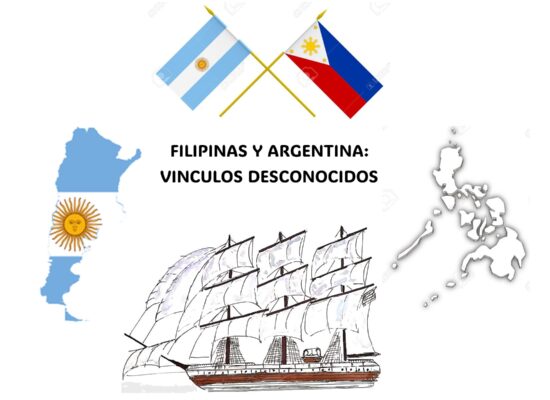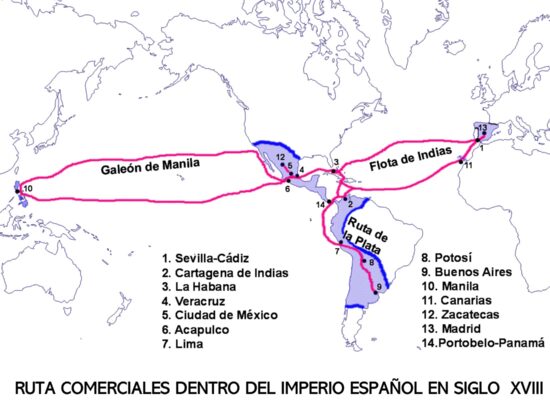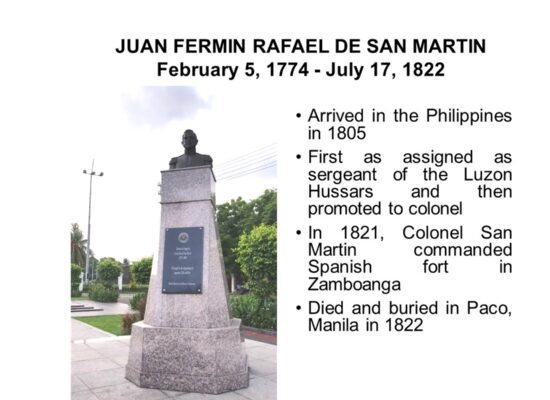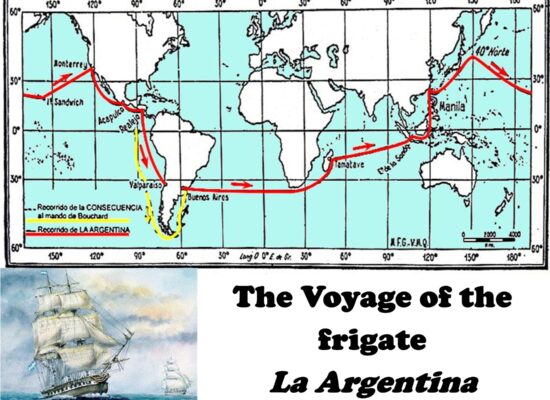
Much is known about the links between the Philippines and Mexico. This is largely due to the Manila-Acapulco Galleon Trade. What is not known is there existed a spur of this trade route, which connected Acapulco and Alto Peru, and from there, to the Vice-Royalty of Rio de la Plata, present-day Argentina through an inland route that passed through Bolivia.
In April 1579, the Spanish Crown authorized the free trade of goods between Manila Callao. Asian goods, such as silk fabrics and porcelain ceramics shipped from Manila, were exchanged mainly for Bolivian silver. The Asiatic goods flowed from Callao to Rio de la Plata via the inland route through Bolivia. Later, the Spanish Crown took away the authority for the trade route, but it continued anyway albeit illegally, Conversely, Latin America brought to the Philippines silver coins minted from Potosi.
Through this inland route, the first Filipinos arrived in Argentina together with the goods. The most famous was a woodcarver named Esteban Sampzon, born in 1756 in Malabon, who arrived in Cordoba, Rio de la Plata in 1780, and became a master carver of religious art. His works are now considered as some of the best of the Argentine religious art from the pre-independence period. Sampzon’s incredible story deserves to be elaborated in another post.

When Argentine authorities conducted a census of resident foreigners in 1855, the census found 13 self-described Filipinos who had been longtime residents of Argentina by that time.
The trade links between the Philippines and Argentina were further strengthened by the Real Compañia de Filipinas. It was incorporated in 1785 . The company’s ships sailed from Manila to the Americas via the Indian Ocean. The company opened a trading house in Buenos Aires in 1789, located in what is now known as Parque Lezama. The company traded in, among others, African slaves. Ironically, the rise of the Real Compañia de Filipinas contributed to the decline of the Manila-Acapulco trade. The warehouse remained active until 1812.
It may be recalled that the colonization of the Philippines by the Spaniards was primarily done through Latin America. Hence, many administrators, soldiers, and priests arrived from the region. Some prominent Latin Americans who went to the Philippines include a figure named Colonel Juan Fermin Rafael de San Martin. He was the elder brother of Argentine liberator Jose de San Martin. He commanded the Luzon Hussars. and fought the Moros in Mindanao. Yet another blog post will put a spotlight his interesting life in the Philippines.

Another San Martin relative who lived in Manila was Bernabe de Escalada, brother-in-law of the Argentine liberator. Escalada became the Senior Officer of the Royal Treasury in Manila. He returned to Buenos Aires a rich man.
Another Argentine, José Manuel Barañao, joined the Royal Treasury of the Philippines in 1820 as Minister Treasurer and held the post until 1832.
In recognition of these people-to-people links, Argentine President Juan Peron donated in 1950 a statue of the Argentine liberator, which now stands in the Walled City of Intramuros, Manila.
When the Latin American colonies including Rio de la Plata achieved their independence from Spain, the trade links ended. However, the newly-independent states never forgot about the Philippines.

In 1817, the now-independent Argentine Republic sent a frigate to the Philippines to harass the Spanish colony, led by a French mariner Hipolito Bouchard. The frigate La Argentina reached the Philippines in 1818, and blockaded the port of Manila. During the blockade, it captured and destroyed 16 Spanish boats. After a few months of marauding, the ship left the archipelago and returned to Argentina.
The above historical links between the Philippines and Argentina are not usually taught in the schools. Blog posts such as this one can help fill the knowledge gaps that to enlighten the younger generation of the long-lost links with Latin America.